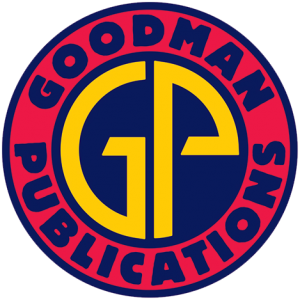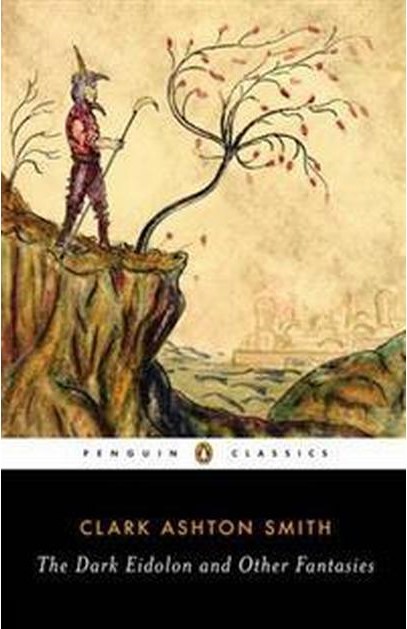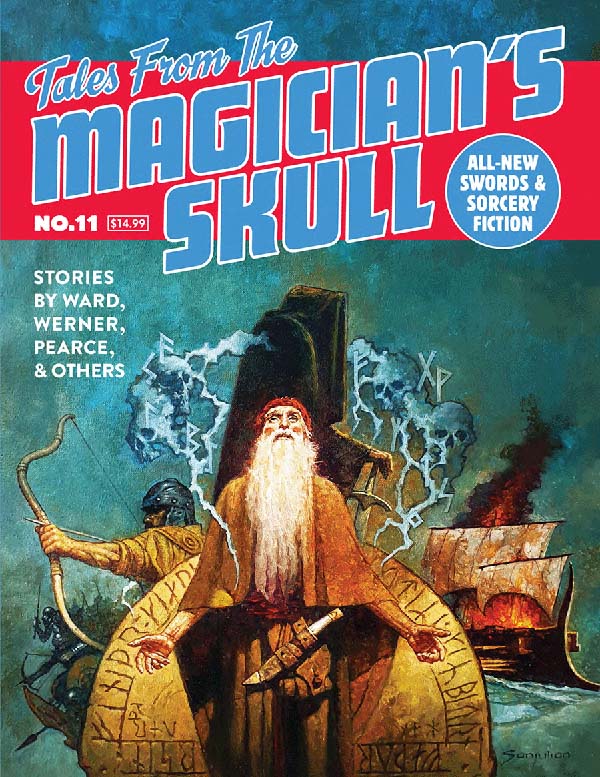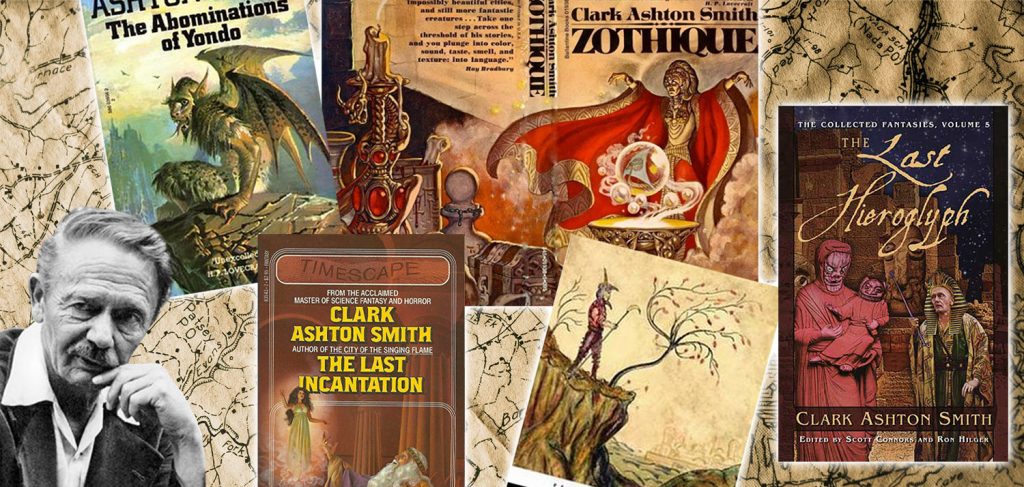
Where to Start With Clark Ashton Smith
by Bill Ward

‘Barrier to entry’ can be a very real thing standing between newer audiences and writers of the past. Readers used to today’s marketing categories or publication norms can easily be overwhelmed when trying to get a handle on something like the prodigious short fiction of a pulp-era writer with a convoluted publication history. Likewise, they might find themselves getting a wrong impression of a writer’s work from one or two atypical—or atypically unsuccessful—stories. Clark Ashton Smith (1893-1961), one of Weird Tales’ ‘Big Three’ writers alongside H.P. Lovecraft and Robert E. Howard, is a writer whose prose fiction output is actually fairly simple to get a handle on, but whose publication history and real lack of what in today’s world would be called a ‘brand’ can make his bibliography seem a bit of a puzzler.
It is Smith’s extraordinary prose fiction, his short stories, that are his chief contribution to the field of fantastic literature. Though he won acclamation for his poetry early in life, it was to the pulps that Smith turned in order to eke out a living during the Depression-era 1930s, producing over 100 stories in a brief window of time. But far from being hastily cranked out pot-boilers, Smith’s fiction was dense, erudite, richly visual, and inventive. His tales resonate with loss and decay, presenting dark marvels of impossible vistas, human grotesques, and exotic lands and people reminiscent of Arabian Nights. His prose is the prose of the poet, and his best work sings with the lyricism and power of a balladeer.
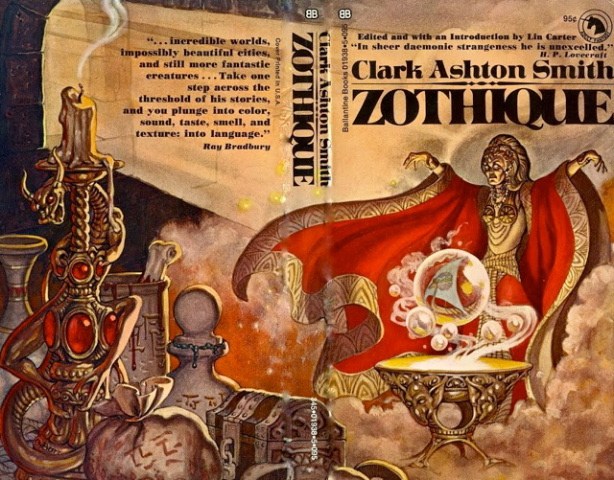
One thing that is key to understanding Smith’s prose oeuvre is that most of his best tales can be, and commonly are, organized by setting. His most involved story cycle is that of Zothique, a senescent and corrupted world of the far future close to oblivion, a direct inspiration for Jack Vance’s Dying Earth stories. Other doomed settings are that of Poseidonis, last isle of Atlantis, a final outpost of sorcery and decadence, and Hyperborea, a lost northern isle of wonder menaced by the slow march of glaciation. Averoigne is the only of these story cycle settings to take place in a recognizable version of our world, but in this case it is a medieval France beset with werewolves, vampires, and black magic. There are other tales, tales set on Mars or the distant planet Xiccarph, as well as in our own contemporary world, but these major collected story cycles form the core of Smith’s fantastic fiction.
Because Smith’s publication history is a series of collections and re-compilations of short fiction, prose poems, and poetry, many of these short works appear again and again throughout the years in various combinations. Looking for information, and seeing these various titles, can create a mistaken impression that there is much more Smith out there than in reality, and that much of it is hard to find. From Smith’s earliest collections, through his Arkham House re-issues, setting-themed Ballantine Adult Fantasy series installments, and modern collected works, there is a great deal of overlap.
So where to start? An excellent place to get a taste of Smith’s overall body of work is the recent Penguin collection, The Dark Eidolon and Other Fantasies (2014). Expertly curated by genre scholar S.T. Joshi, and representing a certain air of mainstream respectability for an author long considered on the obscure fringes of American letters, it includes a representative sampling of work from Smith’s major story cycles, as well as a healthy dose of his poetry and prose poems. Completionists will be pleased to note that Night Shade (Skyhorse) has also recently given Smith his place in the sun, with their five-volume The Collected Fantasies, which not only chronologically collects all of his fiction, but provides definitive, restored editions of these tales in addition to extensive annotation. The original hardbacks of this series are priced in the stratosphere, but they are now republished in affordable paperback and ebook editions.
For those interested in hunting for out of print books, the most common mass-market paperbacks are from the aforementioned Ballantine Adult Fantasy line in the 1970s, and from Pocket Books’ Timescape imprint in the 1980s. The Ballantine titles are organized primarily by setting: Zothique, Hyperborea, Xiccarph, and Poseidonis, with unfortunately no Averoigne-specific edition. Timescape released three complementary collections that cut across the various settings and include a mix of material in each volume; The Last Incantation, The City of the Singing Flame, and The Monster of Prophecy. More recent paperback reissues of older or even original collections are also circulating in the used market, as always the key is to understand that much of this material duplicates itself across publishers’ various lines.

Special mention however must go to the website, The Eldritch Dark: The Sanctum of Clark Ashton Smith. A great amount of Smith’s work is now considered public domain, and anyone that would like to sample his tales (and poetry and other material) can find many of his best available stories for free on this site. Some of my favorites, and those that I would recommend as a place to start, are “The Last Incantation,” a brief meditation on loss of youth and innocence and the limitations of power, “The City of the Singing Flame,” featuring an autobiographically inspired protagonist lured into another world by a beautifully deadly compulsion, and the humorous-yet-horrific “The Tale of Satampra Zeiros” the adventure of a drunken rogue told in ironically ridiculous style by the titular narrator. And those of you with a taste for Martian horror, have a look at “The Vaults of Yoh-Vombis,” an unsettling account of an awakened ancient evil that is a true classic of the weird tale sub-genre.
If dark, poetic fantasy of a singular weird beauty appeals to you, then you will not be disappointed in Clark Ashton Smith, one of the most original fantasists of any era who in recent years seems to be entering into a long-overdue renaissance.
